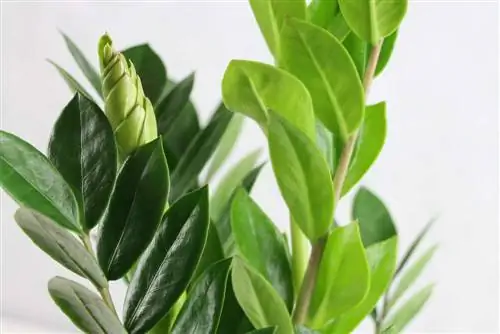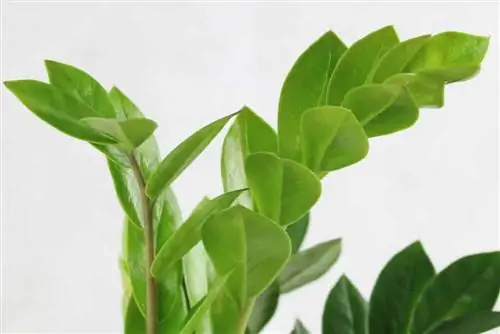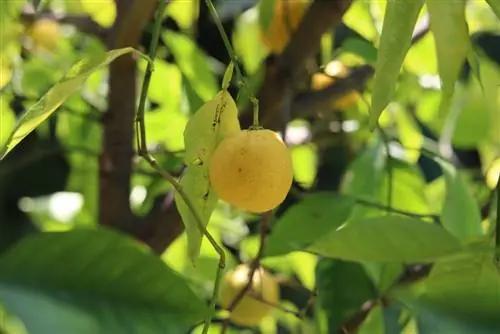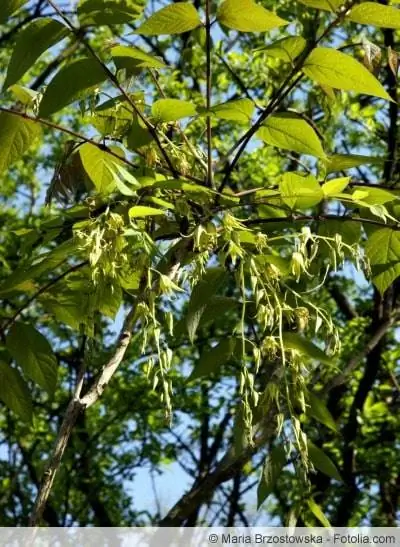- Author admin [email protected].
- Public 2023-12-17 03:39.
- Last modified 2025-01-24 12:45.
The plume, botanically Celosia, owes its name to its large flowers, which bear a certain resemblance to feathers. It belongs to the complex Amaranthaceae family and occurs worldwide in 45 to 60 different species.
Its flowers come in particularly bright, bright colors, which make it a popular and sought-after room decoration. But the plume is also an attractive bedding or container plant in the garden. As soon as a little wind blows, a very interesting play of colors is created in its flowers.
Appearance
The plume is a bedding or house plant that is particularly attractive due to its spike-like cymes. Cymens are puff-like inflorescences consisting of countless small flowers. In the garden it usually blooms from July to October in very bright colors such as orange, red, pink, yellow or even dark purple. In contrast, the strong, dark green of the leaves stands out beautifully. The feather bush is enjoying ever-increasing popularity among all hobby gardeners, although it is not entirely easy to care for. The plume grows between 20 and 25 centimeters high and therefore fits well with other plants in the bed.
Location
The choice of location in the garden is important for the plume, as the plume is very sensitive to cold. That's why the plume in the garden is usually just an annual plant, although it is actually a perennial plant. Keeping it in a pot is recommended if the plant can overwinter in the dark in a frost-free place. When sowing directly into a bed, the location should be chosen so that the plant receives as little frost as possible.
Only under favorable conditions can garden enthusiasts ensure that the plume is truly a perennial plant. The plume needs a semi-shady location because it cannot tolerate direct sunlight. It withers very quickly in full sun. However, if the location is too shady, it only produces a few flowers, which are also poor.
Watering the plumes
The plume is also demanding when it comes to watering. It shouldn't be too dry and it doesn't like being wet. The ideal location in the garden is a location where the soil is constantly moist, but is never wet, otherwise it will rot. When watering the plume as a houseplant, it should also be noted that the plant neither tolerates moisture nor likes dry soil. So it needs to be watered very regularly with little water. It is best to do a thumb test before watering to see whether the plume should be watered.
Excess irrigation water must be removed immediately from both the plant pot and a saucer to avoid waterlogging. Waterlogging also makes the plume susceptible to various pests. The plume likes it when it gets a little humidity from a spray bottle every now and then. Its requirements are similar to those of fuchsias.
Fertilization
As a tropical and subtropical plant, the plume needs little fertilizer. The usual liquid fertilizer, which can be added to the irrigation water every 4 weeks, is sufficient. The potting soil or substrate should not be too nutrient-rich, as this makes the bush susceptible to diseases and various pests. In addition, the colorful flowers do not tolerate a nutrient-rich substrate. For potted plants that have only been cultivated as an annual, fertilization is completely unnecessary.
Cutting
Celosia or feather bushes are less suitable as cut flowers. However, spent inflorescences must be cut out. Nevertheless, the plume is very suitable as a dry plant. To do this, the flowers of the plume should all be open before the stem is cut. Several flowering stems should be dried together as a bush.
Propagation
It is possible to sow the plume as seeds directly into the bed. Nevertheless, early cultivation is more worthwhile. The seeds must be placed in slightly moist soil between March and April at a room temperature of 20° degrees. They are either pressed down or covered with a little soil. Germination takes 1 to 2 weeks if the soil is kept minimally moist. The plume cannot tolerate waterlogging, even as a seed.
Growing in a mini greenhouse is considered ideal if the mini greenhouse is regularly ventilated to avoid condensation. As soon as the seedlings have reached the appropriate size, they should be transplanted individually into plant pots. The seedlings must not be too large, otherwise they will react adversely to transplanting. The plants may only be planted outdoors after mid-May, after the Ice Saints, as the plume cannot tolerate frost. Injuries to the roots must also be avoided at all costs.
Care instructions
- Feather bush serves as a house, bed or container plant
- needs partially shaded location
- moderate watering
- little fertilizer
- takes damage at temperatures below 5° Celsius, very sensitive to frost
- perennial plant, which is usually cultivated as an annual
Pests
As a tropical plant, the plume is very susceptible to aphids and should be checked regularly for possible infestations. The aphids usually come when the plume is not cared for optimally. For example, waterlogging or excessive fertilization weaken the plant's natural resistance. But there are also other diseases to which the plume is susceptible if it is not kept according to the care instructions.
Caring for the Celosia Featherbush Celosia
You can comfortably grow the Celosia Federbusch Celosia in a propagation box or in individual pots and grow it in spring at a soil temperature of around 25 degrees. If the plants are large enough, a semi-shady place should be sought for them. Sun is very good for the growth and prosperity of the plant, but in this location the flowers fade quite quickly. If you choose a location for the Celosia Federbusch-Celosia that is too shady, you will not enjoy the plant either, as it will then become quite sluggish when it comes to flowering.
Water the Celosia only moderately and make sure that it is not too dry. In addition, waterlogging must not form. It is therefore best if you do a thumb test before watering. If there is water in the saucer, pour it out.
As already mentioned, the Celosia loves high humidity. To create this, you can spray the plant frequently. You should also think about fertilizer when caring for Celosia. Fertilize approximately every four weeks. To do this, you can simply use a simple liquid fertilizer from the hardware store. Fertilize sparingly and not too often, as the plant is very quickly over-fertilized and becomes more susceptible to diseases and this has a negative effect on the blooms of the plume celosia.
Cutting and Decorating
Caring for Celosia also includes cutting. Cut off all spent flowers. You can also overwinter the Celosia. To do this, simply place it in a warm place and only water it every now and then so that it does not dry out. However, since the plants are available quite cheaply, most people forego overwintering and simply grow a new plant in the summer.
As a little tip: The Celosia Featherbush Celosia is also ideal for decorative purposes. Even as a dried flower, the strong colors are a real eye-catcher. Use primarily flowers that are about to open and hang them upside down in a cool, shady place to dry.
What you should know in brief
The plume is a beautiful tropical plant that can be kept indoors and outdoors. However, caring for them is a bit tricky as they place certain demands on their environment. It must not be in direct sunlight or shade, can only tolerate moderate watering and fertilizing and is very susceptible to frost. Nevertheless, the plume is a popular garden plant, but is usually only cultivated as an annual, although it is perennial.
- The plume doesn't get its name by chance. Its flowers closely resemble feathers. It also has very showy, brightly colored flowers.
- The play of colors that occurs when the wind blows through a plume can only be described as fascinating. That's why it's constantly increasing in popularity in our gardens as an ornamental plant.
- It can be kept as a container plant or sown in beds. The disadvantage of sowing in the bed: The plume is sensitive to cold and is therefore only annual in the bed. Nevertheless, it is highly recommended because it is an extraordinary eye-catcher.
- If you decide to sow in the bed, you will get a more beautiful effect if you mix flowers of different colors together. However, you should only combine the plume with its own kind in order not to disturb the harmonious play of colors and the look.
- The plume grows to a height of around 20 to 25 centimeters and therefore does not take up much space. This also makes it an excellent container plant. In the pot it can even thrive for many years and produce its beautiful flowers every year.
- However, it needs the ideal position for its lush flowers. This should be hot and sunny. In contrast, it wants to be watered abundantly and once a week.
- If you do everything right when it comes to care, the plume will thank you with continuous flowering from June to September.






